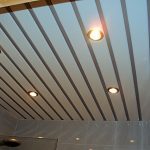Despite a wide selection of diverse flooring, linoleum stably maintains its leading position. The choice in favor of this material is made by people regardless of their financial situation and taste. The key to the aesthetics of the lined linoleum is the absence of seams. But what if the material was incorrectly calculated or distributed? In order to answer this question, we consider the existing methods for traceless connection of linoleum parts.

Most often, for a tight and neat seam, cold or hot welding is used. If there is an alternative, the choice depends on:
- Type of material - commercial linoleum is able to withstand any welding, and household lends itself only to cold exposure.
- The complexity of the seam - cold welding will allow you to perform even the most complex contour.

The use of hot welding is the key to a strong and reliable seam. This method is used after the material is lined and fixed on the floor surface. For bonding, it is necessary to lay linoleum with as little clearance as possible. After this, the junction is thoroughly cleaned and filled with a pre-prepared cord, which under the influence of high temperature softens and connects the canvas.

The complexity of hot welding is that a prerequisite is the presence of a special welding gun-hairdryer, which affects the cord refueling into it.
The described method is highly effective and practically leaves no traces at the joints.
Cold welding requires the presence of quick-drying specialized glue, which includes a special nozzle-needle. It allows you to deeply distribute glue, firmly and permanently gluing linoleum.

Two types of adhesives are distinguished: A and C class. The latter is used for bonding dense linoleums of the old sample. Thinner modern models will be connected with class A glue.
The cold welding method is much simpler than the alternative and is easily implemented even with a complete lack of experience with the material. Cold welding is often used in the repair of linoleum. It is less invisible, but can be used in working with thin linoleum or foam-based material, which is contraindicated in the use of hot welding.

-
 How to prepare walls so that the paint does not peel off
How to prepare walls so that the paint does not peel off
-
 Homemade washing powder
Homemade washing powder
-
 How to make a smooth crate of timber
How to make a smooth crate of timber
-
 How to dismantle old floors very quickly
How to dismantle old floors very quickly
-
 The easiest ways to install an interior door
The easiest ways to install an interior door
-
 How to make reliable wallpaper glue
How to make reliable wallpaper glue
-
 What weld techniques are best avoided
What weld techniques are best avoided
-
 How to assemble a reliable extension cord for winter so that the wire does not harden
How to assemble a reliable extension cord for winter so that the wire does not harden
-
 How to eliminate the gaps between the chimney and slate
How to eliminate the gaps between the chimney and slate
-
 How to make a facing stone with your own hands
How to make a facing stone with your own hands
-
 How to install the last rail of the rack ceiling
How to install the last rail of the rack ceiling
-
 How to beautifully restore windows?
How to beautifully restore windows?
New publications are published daily on our channel in Yandex. Zen
Go to Yandex. Zen


